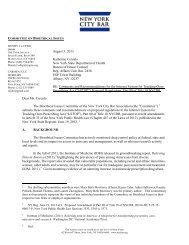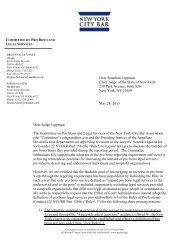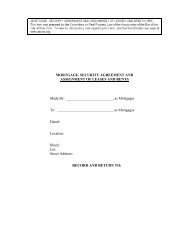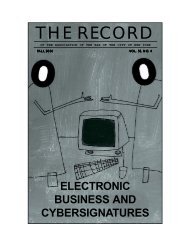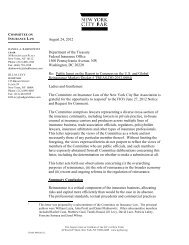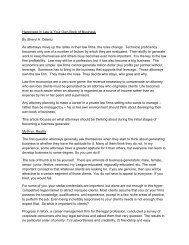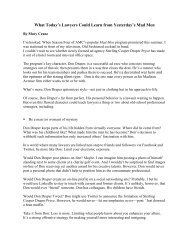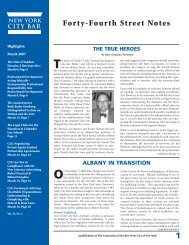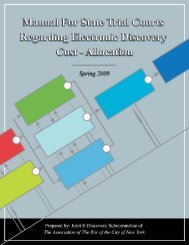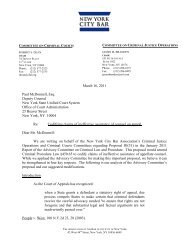2007 Issue 1 - New York City Bar Association
2007 Issue 1 - New York City Bar Association
2007 Issue 1 - New York City Bar Association
You also want an ePaper? Increase the reach of your titles
YUMPU automatically turns print PDFs into web optimized ePapers that Google loves.
W E B S I T E A C C E S S I B I L I T Y F O R P E O P L E W I T H D I S A B I L I T I E S<br />
for people with disabilities, including blindness and other visual disabilities,<br />
motor limitations, hearing difficulties and cognitive disabilities. Those<br />
guidelines have been adopted by the federal Access Board 10 and can serve<br />
as an appropriate standard to be followed under Title III.<br />
Examples of accessibility features include: 11<br />
• Keyboard equivalents for mouse commands;<br />
• Text-to-speech capability;<br />
• Adequately labeled and/or descriptive text equivalents for nontext<br />
elements such as images;<br />
• Non-color equivalents for information conveyed with color;<br />
• Identifiable row and column headers for data tables;<br />
• Assistance for completing on-line forms;<br />
• Allowing users to extend the time for timed-response functions;<br />
• Avoiding “streaming” content techniques for conveying material<br />
information;<br />
• Where input of letters or numbers (which may not be depicted<br />
as text) is required to set up an account, an easy telephone<br />
alternative for account formation.<br />
The lack of such features in many “public accommodations” Websites<br />
leaves much of the Web “mall, library, bank and marketplace” inaccessible<br />
to many Americans.<br />
As the better reasoned court opinions hold, 12 such inaccessibility violates<br />
Title III of the ADA. 13 Unfortunately, some courts and commentators<br />
disagree, largely because they focus only on the aspect of Title III that<br />
10. Electronic and Information Technology Accessibility Standards, 36 C.F.R. § 1194.22,<br />
implementing Section 508 of the Rehabilitation Act of 1973, as amended, 29 U.S.C. § 794d.<br />
11. See id.<br />
12. See infra Section 4.<br />
13. Accessibility of government and federally supported Websites is more clearly mandated<br />
under statute and regulation. Section 508 of the Rehabilitation Act (29 U.S.C. § 794d) requires<br />
that the federal government and companies with federal government contracts make<br />
their Websites accessible. Title II of the ADA, 42 U.S.C. §§12131 et seq. (and court cases<br />
construing it, e.g., Martin v. MARTA, 225 F. Supp. 2d 1362 (N.D. Ga. 2002)), mandates that<br />
the Websites of state and local governments, and other entities receiving federal funding,<br />
provide services through accessible Websites.<br />
2 0 0 7 V O L. 6 2 , N O. 1<br />
121



